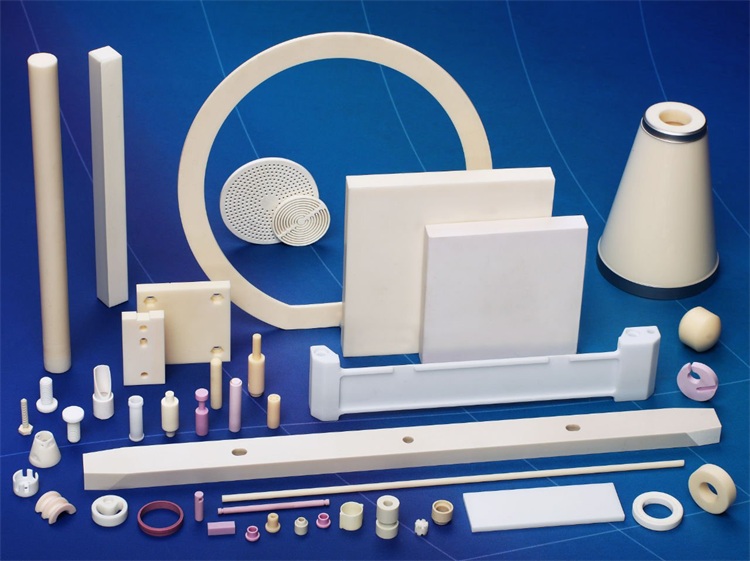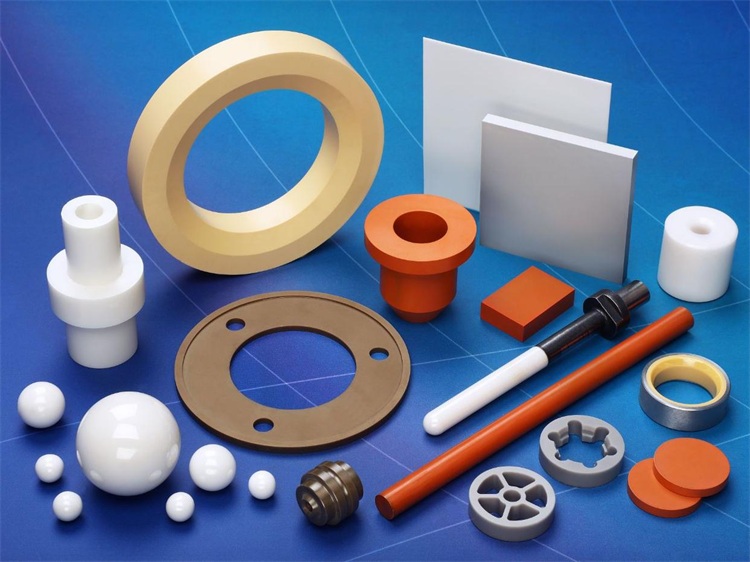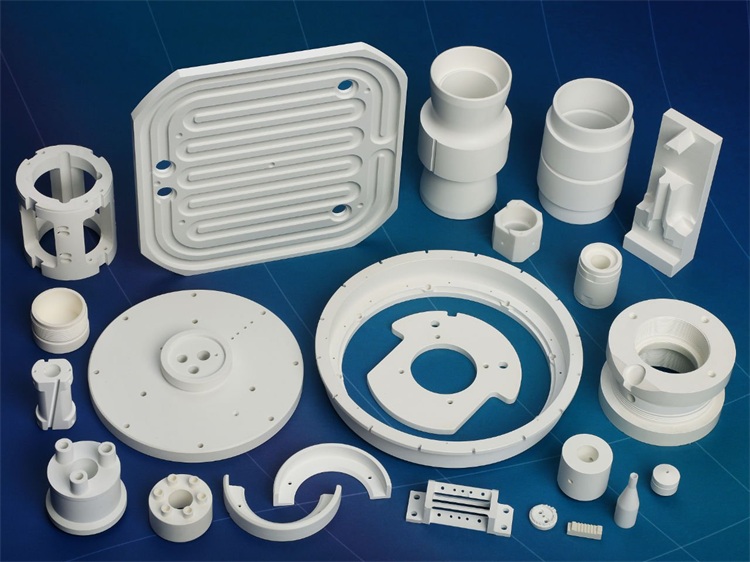Il metodo di lucidatura della ceramica di allumina
Ceramica di allumina sono ampiamente utilizzati nei settori industriali e tecnologici di fascia alta grazie alla loro elevata durezza, resistenza all'usura, resistenza alla corrosione ed eccellenti proprietà di isolamento elettrico. Tuttavia, la superficie delle ceramiche di allumina sinterizzata è solitamente ruvida e presenta microfessurazioni che ne compromettono seriamente le prestazioni e l'affidabilità. Pertanto, il trattamento di lucidatura di precisione è diventato una fase di post-lavorazione fondamentale per aumentarne il valore.

La necessità di lucidare le ceramiche di allumina: il problema fondamentale da risolvere
La superficie non lucidata della ceramica di allumina presenta numerosi problemi che ne limitano l'applicazione in campi di alta precisione e all'avanguardia. Il trattamento di lucidatura mira ad affrontare le seguenti questioni fondamentali:
- Problema di rugosità superficiale: la superficie del corpo sinterizzato è composta da particelle di dimensioni microniche o submicroniche e la rugosità intrinseca può causare un elevato coefficiente di attrito, scarse prestazioni di tenuta e grave dispersione ottica.
- Danni superficiali e subsuperficiali: durante la lavorazione e la sinterizzazione dei corpi verdi possono verificarsi microfessurazioni, pori e tensioni residue, che sono le cause principali della riduzione della resistenza meccanica e del guasto prematuro dei componenti.
- Problemi di biocompatibilità e pulizia: nei settori medico e alimentare, le superfici ruvide sono soggette alla proliferazione batterica e difficili da pulire a fondo. La lucidatura consente di ottenere una superficie liscia e sterile.
- Prestazioni elettriche e integrità del segnale: per i substrati elettronici e i componenti isolanti, le superfici ruvide possono influire sulla distribuzione della corrente, aumentare le perdite di trasmissione del segnale e causare scariche parziali.
- Estetica e tatto: per l'elettronica di consumo e i componenti di lusso, l'effetto specchio lucido può migliorare notevolmente la consistenza e il valore del prodotto.

Metodi di lucidatura tradizionali e loro analisi tecnica
I metodi di lucidatura delle ceramiche di allumina possono essere suddivisi in tre categorie in base ai loro principi: lucidatura meccanica, lucidatura chimica e lucidatura composita.
- Lucidatura meccanica
La lucidatura meccanica è un metodo che utilizza abrasivi fini per il taglio fisico e il flusso plastico sulle superfici ceramiche al fine di ottenere un effetto levigato.
Principio: alla soluzione lucidante vengono aggiunte polveri microabrasive quali diamante, carburo di boro, ossido di alluminio e altre. Attraverso strumenti quali mole lucidanti e panni lucidanti, esse subiscono un movimento relativo con la superficie del pezzo sotto pressione e il materiale viene rimosso grazie all'effetto “microtaglio” dell'abrasivo.
Processi comuni:
Lucidatura grossolana: utilizzare mole diamantate più grandi o pasta abrasiva (come W40-W10) per rimuovere rapidamente i residui di lavorazione e i difetti più evidenti.
Lucidatura fine: utilizzare abrasivi più fini (come W7-W1.5), anche abrasivi su scala nanometrica, per ridurre gradualmente la rugosità superficiale.
Lucidatura a specchio: utilizzare dischi di lucidatura morbidi, come panni di velluto con soluzione lucidante al diamante o biossido di silicio, per ottenere un effetto specchio con rugosità su scala nanometrica.
Applicazione del prodotto:
Utensili da taglio in ceramica: lucidare la superficie del portautensili per ridurre l'adesione dei trucioli e migliorare la durata.
Anello di tenuta meccanica: assicurarsi che la superficie terminale sia piatta e liscia per ottenere una tenuta senza perdite.
Parti in porcellana tessile: come guide per fili metallici, l'elevata levigatezza può prevenire efficacemente i graffi alle fibre.
Vantaggi del prodotto:
Tecnologia matura con costi relativamente bassi per le attrezzature.
Elevata adattabilità alla forma del pezzo, in grado di gestire varie forme geometriche quali superfici piane e curve.
Elevata velocità di asportazione del materiale ed elevata efficienza di lavorazione.
Limitazioni:
Facile da introdurre danni sub-superficiali e sollecitazioni residue.
La dipendenza dall'esperienza dell'operatore è elevata e il controllo della coerenza è difficile. - Lucidatura chimico-meccanica
La lucidatura chimico-meccanica è una tecnica di lucidatura composita che combina la molatura meccanica con la corrosione chimica ed è attualmente il metodo più diffuso per ottenere la planarizzazione globale.
Principio: durante il processo di lucidatura, i componenti chimici presenti nella soluzione lucidante (come acidi, alcali o ossidanti) reagiscono con la superficie dell'allumina formando uno strato modificato più morbido (come l'allumina idrata), che viene poi rimosso dall'azione meccanica del tampone lucidante e dell'abrasivo (solitamente nanosilice o ceria). Questa modalità di ’macinazione morbida su duro‘ riduce notevolmente i danni causati dalla lucidatura puramente meccanica.
Applicazione del prodotto:
Produzione di circuiti integrati: utilizzato per la lucidatura di substrati ceramici in allumina al fine di ottenere superfici piane a livello atomico per il montaggio dei chip.
Substrato LED: substrato in zaffiro lucidato (Al ₂ O ∝ monocristallo) per garantire la qualità della crescita epitassiale.
Gli impianti medici, come le teste articolari artificiali, raggiungono un'elevata levigatezza evitando microfessurazioni e prolungando la resistenza alla fatica.
Vantaggi del prodotto:
È in grado di ottenere una rugosità superficiale estremamente bassa (Ra<1 nm) e una planarità estremamente elevata.
Elimina efficacemente i danni subsuperficiali e ottieni una superficie cristallina perfetta.
Buona consistenza di lavorazione, adatta alla produzione industriale automatizzata su larga scala.
Limitazioni:
La formula della soluzione lucidante è complessa e il costo è elevato.
I parametri di processo (pressione, velocità, valore pH, portata) devono essere controllati con precisione. - Lucidatura laser
La lucidatura laser è una tecnologia avanzata di lucidatura senza contatto e ad alta precisione.
Principio: utilizzando un raggio laser ad alta densità energetica per scansionare la superficie della ceramica, il materiale estremamente sottile sulla superficie viene istantaneamente fuso o vaporizzato. Sotto l'azione della tensione superficiale, il materiale fuso scorrerà verso le depressioni sulla superficie, ottenendo un effetto levigato di “appiattimento dei picchi e riempimento delle depressioni”, per poi condensarsi rapidamente e formare una superficie liscia.
Applicazione del prodotto:
I componenti strutturali tridimensionali complessi, come i canali di flusso dei microreattori e le pareti interne levigate delle cavità complesse delle pale delle turbine dei motori, sono difficili da raggiungere con i metodi tradizionali.
Dispositivi medici: lucidatura selettiva di strumenti chirurgici o impianti con strutture fini.
Vantaggi del prodotto:
Lavorazione senza contatto, nessuna usura degli utensili, nessuna sollecitazione meccanica.
Elevata precisione di lavorazione, buona controllabilità e facile implementazione dell'automazione.
È in grado di gestire forme geometriche complesse difficili da elaborare con i metodi tradizionali.
Limitazioni:
L'investimento in attrezzature è enorme.
Possibili cambiamenti microstrutturali o stress termico possono verificarsi a causa della zona termicamente alterata.
L'efficienza di elaborazione è relativamente bassa. - Lucidatura al plasma
La lucidatura al plasma è un metodo di lucidatura a secco basato su interazioni fisiche e chimiche.
Principio: in un ambiente sottovuoto, il plasma viene generato eccitando i gas di processo (come CF ₄, Ar) attraverso una fonte di alimentazione ad alta frequenza. Gli ioni attivi nel plasma reagiscono chimicamente con gli atomi della superficie ceramica per generare prodotti volatili, oppure attraverso un bombardamento ionico ad alta energia per ottenere uno sputtering fisico, rimuovendo così in modo uniforme i materiali superficiali.
Applicazione del prodotto:
I componenti elettronici ad alta purezza, come gli involucri dei tubi a vuoto e le finestre RF, sono sottoposti a un processo di lucidatura privo di inquinamento e sono in grado di mantenere l'elevata purezza dei materiali.
Componenti che richiedono una stabilità chimica estremamente elevata: l'intero processo viene eseguito in un ambiente controllato senza residui liquidi.
Vantaggi del prodotto:
L'intero ambiente di lavorazione è pulito e non vi è alcuno scarico di liquidi di scarto chimici.
È in grado di ottenere una lucidatura isotropa e di lavorare in modo uniforme forme complesse.
Nessun danno meccanico al materiale.
Limitazioni:
I costi delle attrezzature e di esercizio sono elevati.
Il tasso di asportazione del materiale è solitamente basso.

La lucidatura delle ceramiche di allumina è un campo tecnico multidisciplinare e la scelta del metodo dipende da una valutazione complessiva della qualità della superficie, dell'efficienza di lavorazione, del controllo dei costi e della geometria del pezzo.
Quando si ricercano alta efficienza ed economicità, la lucidatura meccanica rimane ancora la prima scelta per molte applicazioni industriali.
La lucidatura chimico-meccanica è uno standard di riferimento insostituibile quando si tratta di ottenere superfici atomicamente piatte e prive di danni.
Quando si affrontano strutture tridimensionali complesse, la lucidatura laser e la lucidatura al plasma dimostrano i loro vantaggi unici.
Ceramica Brudeze fornisce e vende un'ampia gamma di vetri di quarzo di alta qualità, tra cui ceramica di allumina, ceramica di zirconia, ceramica di nitruro di silicio, ceramica di nitruro di alluminio, ceramica di carburo di silicio, ceramica di carburo di boro, bioceramica, ceramica lavorabile, ecc. Siamo in grado di soddisfare le esigenze di personalizzazione di vari prodotti ceramici.
PRECEDENTE:Precauzioni per la pulizia e la sterilizzazione delle pompe di riempimento in ceramica allumina
AVANTI:Caratteristiche e applicazioni della pompa di riempimento in ceramica di zirconio
CATEGORIE
ULTIME NOTIZIE
- Asta in ceramica di zirconio personalizzata...
- Resistenza alle alte temperature...
- Qual è la resistenza all'usura...
- Qual è la durezza del cer...
- Ceramica in ossido di alluminio...
- Quali sono gli aspetti principali...
- Quali sono i vantaggi meccanici...
- Proprietà termiche dello zirco...
- Quali proprietà dovrebbero essere c...
- Quali sono i vantaggi meccanici...
